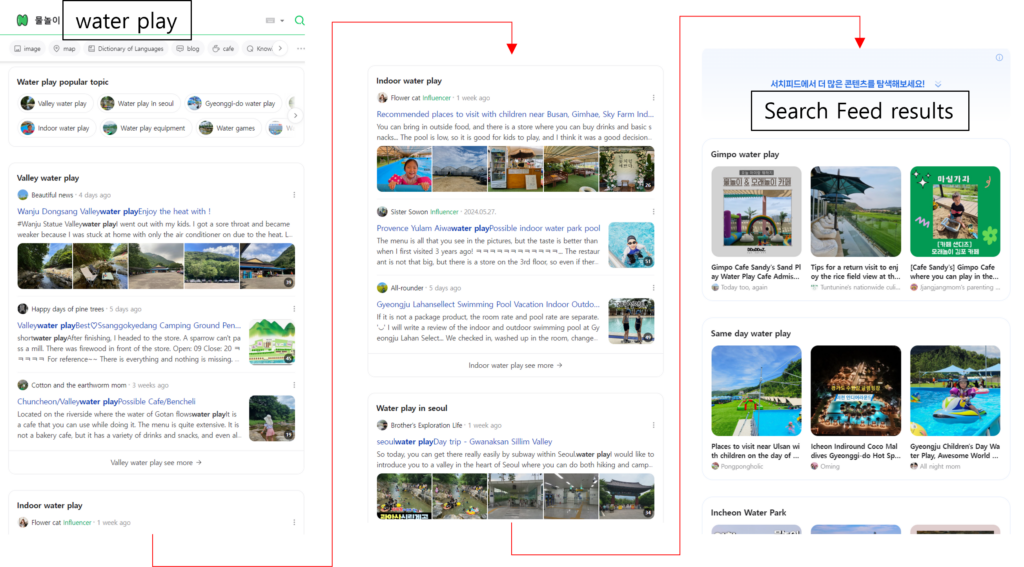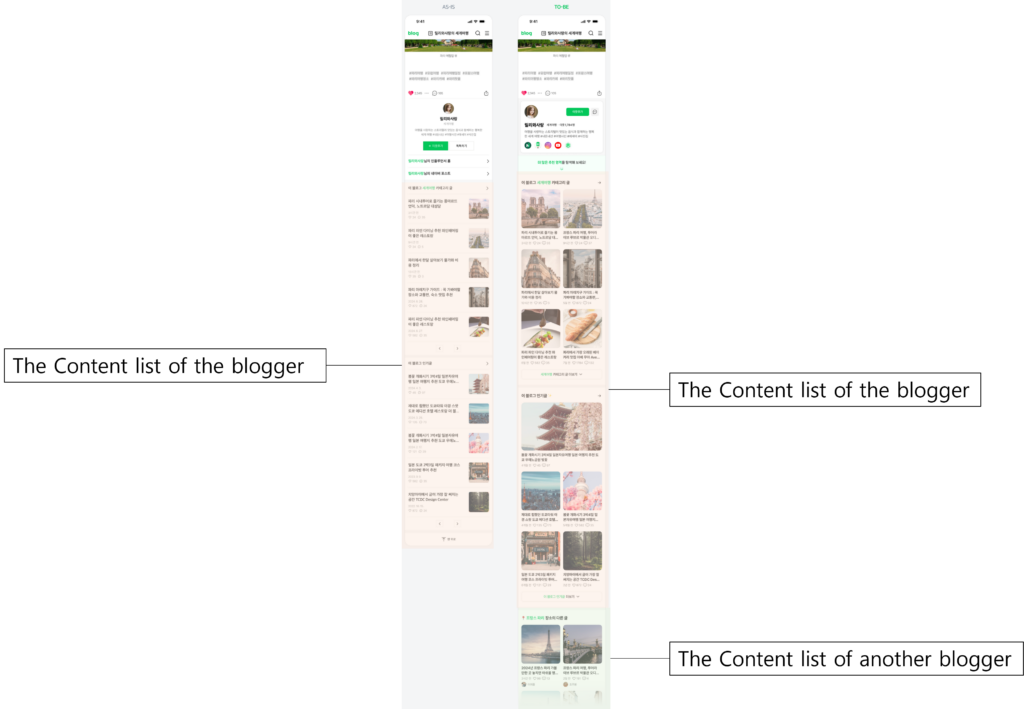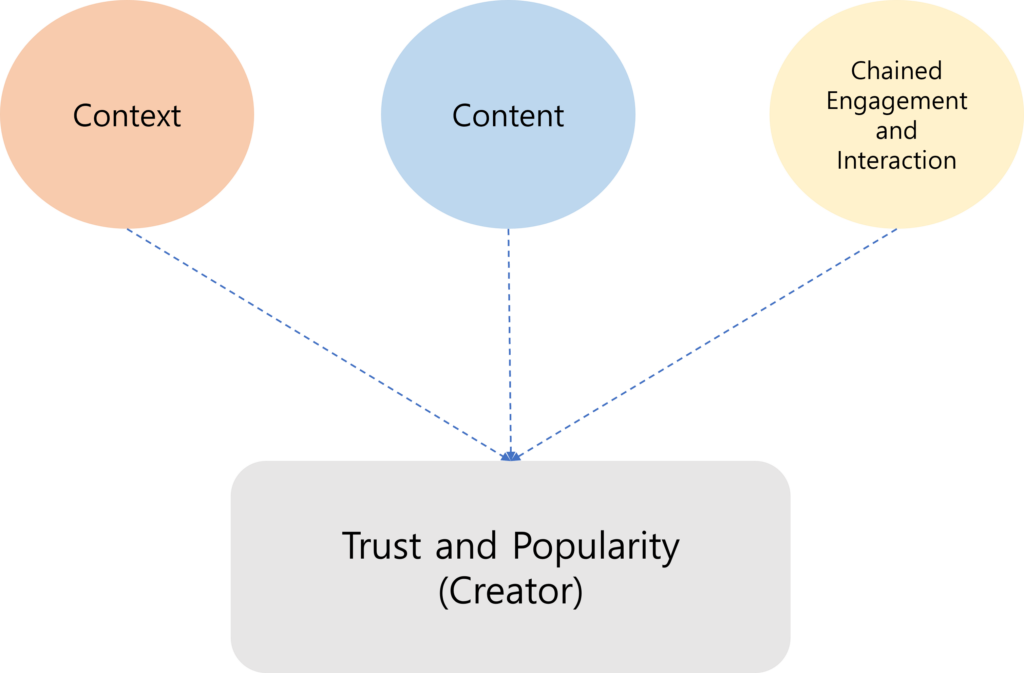Mastering Korean Web Search: Naver Blog Optimization for SEO and Content Marketing

For effective marketing in Korea, it is crucial to understand the Korean web search landscape, where Naver, unlike Google, holds a dominant position over other search engines.
Naver’s unique features require a specialized approach to Naver SEO to achieve optimal results. A deep dive into the intricacies of Naver’s search engine results page (SERP), especially the pivotal role of Naver Blog, is essential. Understanding these elements is key to crafting a winning strategy in Korean web search. With extensive experience in Naver and the Korean digital market, The Egg offers expert insights into leveraging Naver Blog for successful SEO strategies, positioning your brand for maximum visibility and impact.
KOREA SEO MARKETING
Korea Web Search Market Share
In the Korean digital landscape, Naver stands as the dominant search engine, often regarded as the “Google of Korea.” While Google is a global household name, Naver commands a special status locally, capturing a substantial portion of the market. As of the first half of 2024, Naver leads with 57.86% of all search engine traffic in Korea. In comparison, Google holds 32.98% of the market share. Other competitors, like Daum and MS Bing, account for 4.19% and 2.71%, respectively.

These statistics highlight Naver’s significant influence and the critical importance of optimizing for this platform in any SEO strategy focused on marketing in Korea. Despite Google’s global dominance, it still lags behind Naver in Korea, making Naver the primary focus for businesses looking to succeed in this country.
NAVER SEARCH RESULT PAGE
Naver search engine results page (SERP) offers a unique combination of features tailored to the Korean market, blending traditional Korean web search elements with specialized enhancements. The SERP typically includes:
- Paid Ads (pay-per-click, PPC): Sponsored listings that appear at the top of the page.
- News Articles: Relevant news content related to the search query.
- Blogs: The Naver blog section featuring content from both its own blogging platform and blogs from other platforms.
- Cafe: Community discussions and posts from Naver Cafe, a social networking service where users share and discuss various topics.
- Map: Local map results providing geographic information and locations relevant to the search.
- Shopping: Product listings and e-commerce options for online shopping relevant to the search.
- Dictionary: Definitions and explanations from Naver’s dictionary service.
- Scholar: Academic articles and research papers from Naver’s scholarly resources.
- KnowledgeiN (Q&A): Answers from Naver’s question-and-answer service, often a go-to resource for quick information.
- Videos and Images: Multimedia content that enhances user engagement.

A standout feature of Naver’s search engine results page is the Smart Block system, which organizes search results by themes rather than just keywords. This system allows Naver to group content into thematic blocks, making it easier for users to find the exact information they are looking for. For example, a search for “water play” could display blocks for specific types of water play, such as valley water play, indoor water play, or water play in Seoul, enabling users to quickly find content tailored to their specific interests.
Building on this thematic organization, Naver’s Search Feed enhances user experience by understanding specific search intentions and offering personalized, discovery-based recommendations. Using advanced technologies like “Deep Matching” and language models, the Search Feed curates the most relevant content blocks for further exploration. Features such as continuous scrolling and a feed layout with content previews make it effortless for users to explore content, minimizing the effort required to consume search results. For instance, a search for “water play” might not only show thematic blocks but also suggest related locations like Incheon or Gimpo, allowing users to discover additional relevant information seamlessly.
This thematic organization extends beyond simple categorization; it involves an AI-driven analysis of document styles and topics, which groups similar documents together. These blocks are then customized based on demographic factors such as age and gender, providing a more personalized search experience. For content creators, this means that well-crafted, niche-specific content has a better chance of being displayed prominently in relevant blocks, increasing the likelihood of reaching the right audience.
Understanding Naver Blog
Understanding Naver Blog involves diving into its key features, advantages, and recent developments, which play a crucial role in enhancing brand awareness and facilitating audience engagement. By leveraging these elements, businesses can significantly drive traffic to their websites. In the following sections, we will explore strategies for optimizing Naver Blog content, focusing on insights into Naver’s search algorithms and tools like the Naver Keyword Planner, to maximize its potential for your brand.
What is Naver Blog?
Launched in 2004 by the Naver Corporation, Naver Blog is a popular online platform that enables users to create and publish their own blogs. The platform offers a variety of features including customizable templates, multimedia support, and social media integration, making it easy for users to share content across different platforms. Naver Blog features a broad range of topics, with popular subjects including product reviews, restaurant and cafe recommendations, travel, and beauty tips. Bloggers typically adopt a casual tone to engage readers, enhancing the platform’s community feel.
What are the advantages of having Naver Blog?
One of the key advantages of Naver Blog is its effectiveness as a brand awareness tool. It allows businesses to present their brand story, company background, and details about products or services in a format that resonates with users, especially those at the initial stages of the conversion funnel. The platform’s customization options enable companies to tailor their blog’s background and layout to reflect their brand image. Additionally, businesses can engage with users directly by responding to comments and answering frequently asked questions, creating a more interactive experience.

There was a period when video content surged in popularity, prompting questions about the continued relevance of blogs. However, the demand for text content, which videos cannot fully replace, remains significant. In 2023, approximately 1.26 million new Naver blog users were added, and around 240 million new posts were published. The platform’s Monthly Active Users (MAU) have been on the rise, increasing from 2.44 million in March 2021 to 2.94 million in June 2024, representing a 20.49% growth.
Leveraging Naver Blog for Business
Naver Blog can be a game changer for businesses aiming to enhance their online presence, drive growth and convert users. Here are some strategies to maximize the platform’s potential:
- Craft content that highlights your industry knowledge and expertise to establish your brand as a leader and reach a larger audience.
- Optimize posts with strategic keyword integration to build brand authority, enhance visibility, and improve Naver rankings.
- Consistently publish valuable and relevant content types, such as how-to guides, industry analyses, and expert opinions, to build trust with potential customers and facilitate their conversion into loyal clients.
- Direct blog visitors to your business website through strategic linking, turning their engagement into conversion opportunities.
AI IN ACTION
Naver Blog optimization is deeply influenced by AI, from Smart Blocks and Search Feeds to advanced algorithms like D.I.A.+. At The Egg, we leverage these AI-driven nuances to craft and optimize content. This ensures your brand achieves superior visibility and engagement in Korea’s unique digital landscape.
Implementing these strategies can lead to significant benefits for your business, particularly in user conversion. The combined effect of strategic keyword optimization and high-quality content publication builds a robust platform for engaging potential customers, nurturing their journey from interest to loyalty. Furthermore, by creating seamless pathways for visitors to explore your offerings, you enhance this engagement. Together, these efforts strengthen your market position and drive sustainable growth.
Naver Blog Recent Update

As part of the recent updates, Naver has redesigned the user interface (UI) at the bottom of blog pages. Previously, only two blocks were visible (as shown in the image on the left), but this has now changed (as seen in the image on the right). The additional third block (“The Content List of Another Blogger”) offers readers more content recommendations based on features like tags, topics, location information, and more, encouraging users to stay on the platform longer. This update provides bloggers with increased opportunities to be discovered through trending topics and blogs.

A notable change in this update is the ability for users to link to external channels like Instagram and YouTube from their blog profiles. Additionally, Naver plans to integrate its own short-form video service, ‘Clip,’ with blog profiles in the future. This feature allows marketers to create a cohesive digital identity, driving more organic traffic through interconnected social channels.
Naver is continually advancing its services with the latest technology, including the development of CLOVA for Writing, which is currently in beta. This AI tool aims to elevate blogging by analyzing your writing style and recent interests, assisting with writer’s block, and helping to expand, summarize and rephrase content. CLOVA for Writing also suggests engaging titles and relevant hashtags, suited to your style, enhancing personalization in your content creation process. Meanwhile, Naver is furthering personalization by employing A/B testing to refine content recommendations based on demographic factors like age. These advancements will enhance efficiency in managing content on Naver and enable more precise audience targeting through personalization.
Ready to maximize your digital marketing in Korea?
Naver Blog optimization
In order to optimize your Naver Blog, it’s important to look into using the Naver Keyword Planner and understanding Naver’s search engine algorithms. This involves learning practical tips to boost your content’s visibility and improve search rankings with effective keyword strategies. By gaining insights into how Naver ranks content, it’s possible to reach a wider audience and attract more attention to your blog.
Keyword Planner

Naver Keyword Planner is Naver’s version of Google’s Ads Keyword Planner. It is designed to help users optimize their content for better search visibility and improve their Naver SEO. This tool allows users to research and analyze keywords to understand their search volume, competition level, and trends. By leveraging this data, users can create content that aligns with current search trends. This approach enhances your chances of achieving higher rankings in Naver’s search results.
Naver Search Engine Algorithm
Understanding Naver’s unique search algorithms is crucial for Naver SEO and blog optimization. Specifically, the C-Rank and D.I.A. Rank systems are designed to assess and rank content based on quality and relevance. These algorithms are tailored to evaluate how well content meets user needs on Naver.
C-Rank

C-Rank is a crucial part of Naver’s search algorithm, specifically designed to evaluate and rank blogs based on several key factors. This algorithm assesses the Context by determining how focused a blog is on specific topics of interest, the Content quality by evaluating the depth and usefulness of the information provided, and the Chain reaction by analyzing the engagement and interaction generated by the content. These elements collectively contribute to determining the Creator score, which reflects the overall trustworthiness and popularity of the blog.
The essence of C-Rank lies in evaluating how effectively a blog produces high-quality content within a specialized area. It favors blogs that deliver detailed, well-researched content over those that offer generic or obligatory updates. As C-Rank’s influence on search results grows, it becomes increasingly important for blogs to specialize and provide expert insights to perform well in search rankings.
D.I.A. & D.I.A.+ Rank
While C-Rank is concerned with a blog’s overall trustworthiness and focus, D.I.A., which stands for Deep Intent Analysis, assesses an individual document’s informativeness and its relevance to the user’s query. D.I.A. (and later D.I.A.+) works in tandem with C-Rank to expose “good articles” from “good sources”.
D.I.A. considers factors such as topic relevance, content quality, originality, and timeliness, and prioritizes results based on user preferences. Through D.I.A., highly informative content from less authoritative blogs still has a chance to be exposed. Studies indicate that blogs with high C-Rank scores often produce content that also performs well under the D.I.A. system, demonstrating the complementary nature of these algorithms in boosting content visibility and credibility on Naver.

Naver upgraded the D.I.A. algorithm to D.I.A.+, which made search results of user generated content (UGC) like blog articles more relevant and accurate to a searcher’s intent.
The most significant change is the introduction of a technique called Document Expansion to solve “term-mismatch problem” where the vocabulary used by a searcher may differ from that used by the UGC content creator. Here is an example to illustrate this: if a user types “Lionel Messi is GOAT,” Naver’s search engine understands it as “Lionel Messi is the greatest of all time” instead of “Lionel Messi is the animal goat.
Another emphasis of the upgrade is on analyzing the intent behind a search query using an advanced language model like BERT, which was first introduced by researchers at Google, to better understand the meaning of ambiguous language.
With these improvements, the process of finding documents that align with the analyzed query intent has become more precise and sophisticated.
How to Leverage Naver’s Search Algorithm with Strategic Category Selection
To rank higher on Naver’s search results for blogs, it’s important to strategically use Naver’s category settings to enhance the platform’s understanding of your content. By selecting the right categories, you can improve your visibility in search results. The Egg advises using manual category settings wherever possible, rather than relying solely on Naver’s automated features.
Naver offers 32 different categories grouped into four main sections, and choosing the most relevant one for your content can significantly impact your search rankings. Here’s a breakdown of the options:
entertainment/art |
lifestyle/shopping |
hobbies/travel |
knowledge/trend |
|---|---|---|---|
|
|
|
|
SUMMARY
Achieving success in the Korean web search arena requires a strategic focus on Naver’s distinct features and SEO practices. Leveraging Naver Blog can enhance brand visibility and generate valuable backlinks, driving increased traffic to business websites. However, Naver’s algorithm is continuously evolving, and the search patterns and preferred writing styles of local Korean users are distinct. To maximize effectiveness, it’s advisable to manage a Naver Blog with a service provider who has a deep understanding of these nuances. At The Egg, we have a dedicated team of specialists with extensive experience in optimizing Naver Blogs, ensuring that our strategies are finely tuned to resonate with the Korean market.
Additionally, for further insights into Naver’s SERP, SEO, and algorithms, please refer to the following link.







